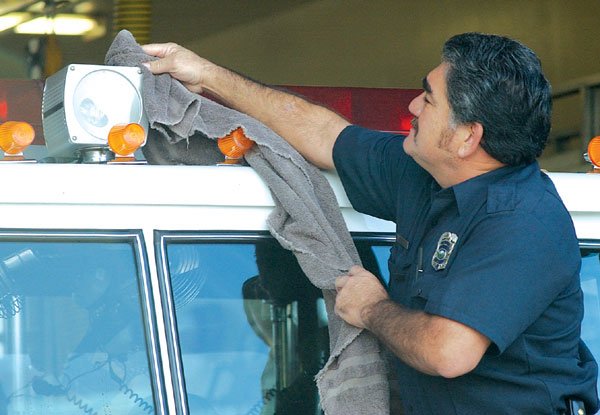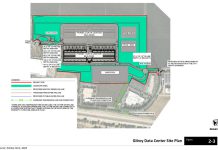GILROY
– Drivers willing to pay $300 to keep traffic lights green could
– in a worst-case scenario – cost the city $220,000 to keep
intersections free of traffic jams.
GILROY – Drivers willing to pay $300 to keep traffic lights green could – in a worst-case scenario – cost the city $220,000 to keep intersections free of traffic jams.
Traffic Engineer Kristi Abrams says it could cost the city $5,000 an intersection to safeguard signals against so-called traffic light pre-emption devices. These devices – which are designed for emergency vehicles – shine a strobe light on the optical sensors set atop traffic signals, causing lights to jam.
There are 44 intersections within city limits that use optical sensors to keep stoplights green for emergency vehicles attempting to pass through without delay.
“We’re hoping we can get a reduced rate (on the upgraded system) based on quantity of scale,” Abrams said. “If companies charge $5,000 to bring a crew out to do the work, maybe they’ll charge something less for the other intersections since they already have their workers here.”
Abrams said she is still collecting information on the matter so she can make a presentation to City Administrator Jay Baksa and ultimately the City Council. To help fix the problem, City Council would have to scrape together the money from an already recession-deflated budget.
The process is expensive because intersections would require new software to be installed inside traffic control cabinets (the traffic signal power boxes seen on the corners of streets). Also, the city’s fleet of fire trucks and squad cars would need upgraded transmitters capable of sending a signature strobe to the sensors.
Currently, any strobe light can trigger a signal jam.
The $300 devices, which are becoming more commonplace, are marketed through many different avenues. Dealers are instructed to sell only to “authorized users” such as volunteer first responders, doctors and security personnel, but it’s easy to get the device nonetheless. In some cases, filling out an online form and charging the cost to a credit card does the trick.
“Gilroy is not alone in this,” Abrams said. “Our contractor says he’s getting calls from other cities with the same issues.”
Complicating matters is that some motorists may not even know they are one of the offenders.
When Abrams was trying to ascertain the cause of a left-turn signal at Tenth and Chestnut streets that wouldn’t switch from red to green, she noticed the light jam after a large yellow bus passed through the intersection with a strobe light on.
The bus, likely a Gilroy Unified School District vehicle, apparently had the strobe light on so it would be more visible to drivers on that foggy day.
According to GUSD Transportation Supervisor Darren Salo, state law requires busses to use strobe lights whenever visibility is reduced to 500 feet or less – roughly the length of one and a half football fields.
“It’s hard for me to believe our strobe lights are causing the signal to stay green,” Salo said. “They just blink too slow.”
According to Abrams, her research indicates otherwise.
“But the point is moot with the school district. They are just following the law,” Abrams said.
Salo said the district will be hard-pressed to help the city out of this jam. The state even dictates, he said, where the strobe light must go. So placing the light low enough on the bus – so it couldn’t transmit light onto the traffic signal sensors – is not an option.
By next school year, Salo said, GUSD will have strobe lights on its entire fleet of busses.
A “transit priority” program adopted by the Valley Transportation Authority in December may also contribute to clogged intersections shortly. The VTA has already installed light transmitting systems in their busses. Over the next few months the agency will work with Caltrans to install software in traffic control cabinets along bus line 22 in Mountain View and Palo Alto for testing.
” ‘Transit priority’ will not alter traffic signals in mid cycle such as the preemption system on emergency response vehicles … but will extend green lights or shorten red lights to help keep bus routes on schedule,” VTA spokeswoman Brandi Hall said.
In some cases, drivers may notice no difference – other than a slightly longer wait – at intersections when pre-emption devices of whatever type get used. But heavily traveled intersections do pose a problem.
The intersection at Tenth and Chestnut streets can back up enough to make it difficult to exit the U.S. 101 off-ramp, motorists have complained. Also, some motorists will risk safety by running a red light once they identify a stuck signal.














